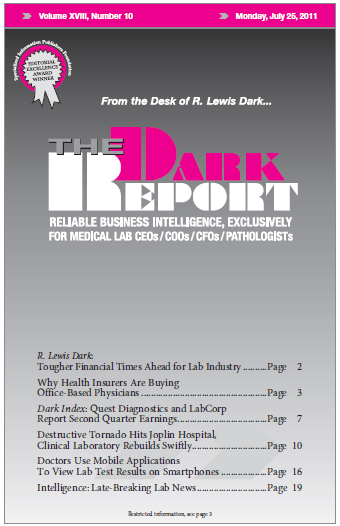JUST ONE DAY APART, the nation’s two largest laboratory testing companies reported second quarter and half-year earnings for 2011. Each financial report opened a window into marketplace developments for the first six months of this year. First to release its earnings report was Quest Diagnostics Incorporated. On July 20, it announced that quarterly net revenue …
Quest Diagnostics and LabCorp Report Second Quarter Earnings Read More »
To access this post, you must purchase The Dark Report.


